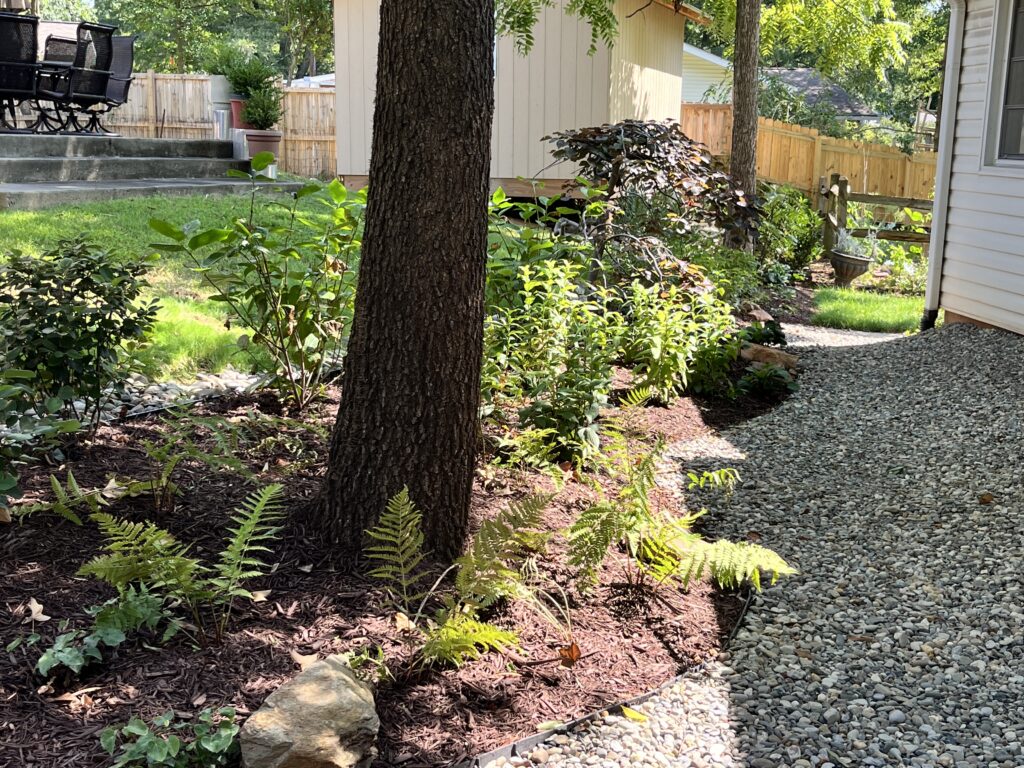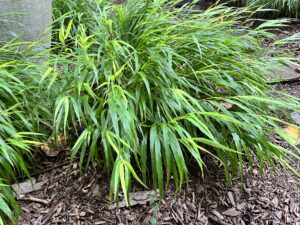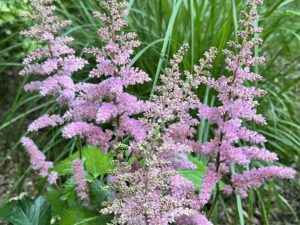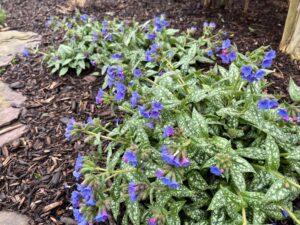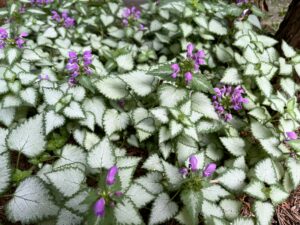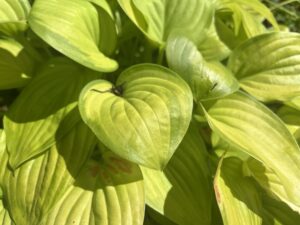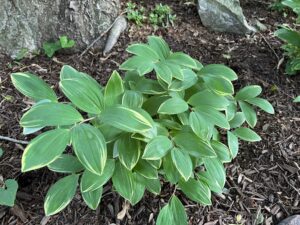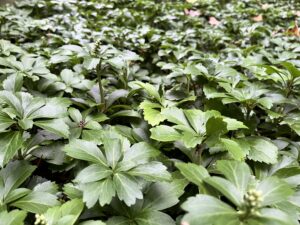The area beneath a tree is often one of the most difficult spots to landscape. The roots are spread wide and shallow, meaning any digging or planting can disrupt their delicate system. And yet, with the right approach, it’s possible to transform this challenging space into something beautiful.
In this guide, we’ll show you how to approach landscaping under trees in a way that protects the tree’s roots while adding visual appeal to your yard. Let’s dive in.
Understanding Tree Root Systems
Before you begin any work, it’s essential to understand the nature of tree roots. Most of a tree’s roots are shallow, sitting within the top 12-18 inches of soil and spreading far beyond the tree’s canopy. These roots are crucial for absorbing water and nutrients.
When it comes to landscaping under trees, disturbing these roots can cause stress to the tree, potentially leading to poor health or even death. That’s why it’s important to choose your landscaping materials and plants carefully, so you don’t disrupt this vital root system.
Best Practices for Landscaping Under Trees
Mulching the Area
One of the easiest ways to improve the look of the space beneath your tree is to use mulch. A 2-3 inch layer of mulch helps retain moisture, regulate soil temperature, and reduce weeds. It also gives the area a neat, polished appearance.
When applying mulch, avoid piling it up against the tree trunk (a practice known as “volcano mulching”). This can trap moisture against the bark and lead to rot. Spread the mulch evenly and keep it about 6 inches away from the trunk for the best results.
Choosing the Right Groundcovers for Landscaping Under Trees
If you want to add greenery beneath your tree, go for shade-tolerant groundcovers with shallow roots that won’t compete heavily with the tree for water and nutrients. Some great options include Hosta, Ajuga, Pachysandra, and Ferns.
Twelve Plants That Thrive Under Trees
It’s important to note that landscaping under trees is a competitive environment for plants. Tree roots are already monopolizing the available resources, so new plants will need extra care, especially in their first year. Be prepared to water them more frequently until they become established.
Using Decorative Stones or Gravel
Decorative stones or gravel can be a fantastic solution for landscaping under trees without disturbing their roots. These materials allow water to reach the roots while creating a clean, low-maintenance look. River rocks, small boulders, or gravel can add texture and make the area visually appealing without the need for heavy planting.
Incorporating Raised Beds for Landscaping Under Trees
If you’re thinking of adding a raised bed, it’s essential to proceed with caution. While raised beds can allow you to add plants without digging into the ground, it’s important not to make them too deep. A shallow raised bed (no more than 6 inches) can work, as long as you select drought-tolerant plants that won’t demand too much water.
Be careful not to smother the tree’s roots by adding too much soil. Raised beds should be used sparingly, and always with the health of the tree in mind.
Plants to Avoid When Landscaping Under Trees
While many plants can coexist with trees, others are best avoided. Stay away from aggressive, fast-growing plants that could choke the tree’s roots or compete heavily for water. Avoid invasive plants like English ivy or deep-rooted plants that require extensive watering, like Hydrangeas.
It’s best to stick with plants that can tolerate shade and dry conditions, as these are the most compatible with landscaping under trees.
Avoiding Common Mistakes in Landscaping Under Trees
Digging Too Deep
One of the biggest mistakes people make when landscaping under trees is digging too deep. Tree roots are very close to the surface, so any deep digging can sever them. If you need to plant, dig shallow holes and place plants in a way that gives the tree’s roots plenty of room.
Overplanting
It’s tempting to fill the space under your tree with a variety of plants, but less is more in this case. Too many plants can compete with the tree for water and nutrients. Stick with a few carefully chosen plants, and let them spread out naturally over time.
Watering Improperly
Watering is essential, but it’s important to find the right balance. The tree and any plants you add under it will need consistent moisture, but avoid overwatering. Soak the area deeply but infrequently to ensure water reaches the tree roots without drowning them.
Creative Design Ideas for Landscaping Under Trees
Not interested in planting? You can still enhance the area under your tree without digging or disturbing the roots. A small seating area with a bench or garden chair can turn the shaded space into a relaxing retreat. You could also use stepping stones or a simple gravel path to add charm and accessibility.
Consider adding garden art like birdbaths, sculptures, or even a few large decorative stones. These elements can create visual interest and keep the area low-maintenance while avoiding damage to the tree’s root system.
Maintenance Tips for Landscaped Areas Under Trees
Once you’ve completed your landscaping under trees, regular maintenance will keep the area looking its best. Reapply mulch annually to maintain its appearance and protective benefits. Check on your plants frequently, especially in the first year, to ensure they’re getting enough water.
Frequently Asked Questions About Landscaping Under Trees
1. Can I plant flowers under a tree?
Yes, you can plant flowers under a tree, but it’s important to choose shade-tolerant varieties that won’t compete too much with the tree for water and nutrients. Opt for shallow-rooted flowers like Hosta, Ferns, or Lungwort. Remember, flowers planted under trees may need extra watering and care to get established since tree roots dominate the area.
2. Will adding soil or mulch around a tree harm its roots?
Adding a thin layer of mulch (2-3 inches) is beneficial for tree roots as it helps retain moisture and regulate soil temperature. However, adding too much soil or mulch can suffocate roots, trap moisture, and cause root rot. Be sure to keep the mulch a few inches away from the tree trunk to avoid these issues.
3. Can I build a raised bed under a tree?
You can build a shallow raised bed under a tree, but keep it no more than 6 inches deep. Avoid heavy soil or water-retentive plants that could suffocate the tree’s roots. Select drought-tolerant plants that thrive in the existing conditions to minimize competition for resources.
Keep an eye on the tree itself, too. Signs of stress like yellowing leaves or sparse branches might mean the tree is struggling to compete with new plantings or the area needs a change in watering practices.
Landscaping under trees requires a thoughtful approach, but with the right techniques, you can create a beautiful, healthy space that complements both your tree and your yard. By using mulch, choosing the right plants, and avoiding common mistakes, you’ll be able to enhance the area under your trees without harming their vital roots.
Invest in your home’s landscape with Allentuck Landscaping Co. Request an estimate today!
Allentuck Landscaping Company is Your Residential Landscape Company
Phone: 301-515-1900
At Allentuck Landscaping Company, our mission is to create beautiful environments for people to enjoy. We see landscaping as a way to improve people’s lives.
The Allentuck Landscaping Company team has been delighting homeowners in Maryland, Washington DC and Northern Virginia for over 28 years with our turnkey approach to landscape design, installation, construction and maintenance. Most companies try to serve many types of customers at the same time; homeowners, shopping centers, office buildings and the list goes on. At Allentuck Landscaping Company, we focus on one customer, you, the homeowner. We have a singular focus on bringing you the best landscape practices, the best customer service, and the best value for your home.
Services Provide – Master Landscape Plans, Complete Maintenance Programs, Plantings, Patios, Walkways, Retaining Walls, Water Features, Outdoor Lighting, Outdoor Kitchens, Trellises & Pergolas, Irrigation Systems, Drainage Solutions, Grading & Sodding. Fire Pits & Fire Places, Spring Clean Ups, Decks, Fences
Areas Served – Chevy Chase, Bethesda, Potomac, Rockville, North Potomac, Darnestown, Gaithersburg, Germantown, Travilah, Damascus, Boyds, Clarksburg, Ijamsville, Urbana, Frederick and Washington DC.
Allentuck Landscaping Co. is a proud member of the National Association of Landscape Professionals.

